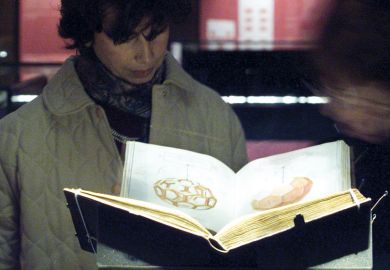The widening of access to university courses in engineering and sciences has brought a number of problems associated with the level of mathematical achievement of many entrants. At the same time, the role and scope of mathematics in these disciplines is increasing, because of the need to build models for computer-based analysis and design. As Anthony Croft and Robert Davison explain in the introduction to Foundation Maths , the remedy provided in many universities has been the establishment of a foundation year. During this period there is an opportunity for forgotten, missed or misunderstood mathematics to be covered at a reasonable pace. Experience has shown that an essential support for this year is a clear, readable textbook. Croft and Davison's book meets this need and has proved to be popular with foundation-year students. This second edition has a new chapter on decimal fractions, and new material on the composition of functions, using a "block-diagram" approach.
Now in its third edition, Dexter Booth's Foundation Mathematics is aimed at the same audience, and achieves a similar degree of clarity, readability and friendliness. The main difference in content is that this book contains a chapter on limits, sequences and series and, given this flavour of analysis, the treatment of calculus is rather deeper than that given by Croft and Davison. The authors of both of these titles aim to provide something of a structured learning experience by using in-text diagnostic questions. Indeed, Booth supplies a "pre-module" test for the reader to diagnose whether study of a particular module is necessary or not. Both texts contain copious worked examples and exercises with answers.
The newcomers to the foundation-year market are L.R. Mustoe and M. D. J. Barry with their Foundation Mathematics . This book also takes as its starting point the need to firm up ideas on arithmetic, and proceeds to an introductory treatment of calculus. The authors have chosen not to include a chapter on statistics, but they have elected to maintain a strong geometrical influence throughout. One of the reasons for this is probably connected with both authors' membership of the European Society for Engineering Education's (SEFI's) Working Group on Engineering Mathematics. Through this group, they have become aware of the resurgence of geometry as a specific topic of interest in engineering mathematics curricula abroad. Thus the book contains a chapter on basic two and three-dimensional geometry and this leads neatly into a chapter on proof and methods of its construction. There is also a chapter on coordinate geometry.
Aimed to be used either as a sequel to Foundation Mathematics or as a free-standing text, Mustoe and Barry's Mathematics in Engineering and Science takes the reader through to the end of a typical first-year undergraduate course. Written with the SEFI core curriculum in engineering mathematics in mind, the "no-nonsense" clarity of style and the geometrical influence is continued in this volume. The book opens with a brief review of foundation material, and as well as the usual topics, there is a chapter on integer variable, discussing sequences and series, recursion, induction and goes on to a first treatment of power series. An interesting inclusion is an appendix on mathematical modelling, where a case study on room ventilation is developed. A distinctive feature of both books is the encouragement to make use of calculators or PCs for solving appropriate exercises and improving understanding. Both texts contain many worked examples and exercises with answers and, taken together, these books provide a comprehensive first course in engineering mathematics from a variety of entry points.
Mathematics for Scientific and Technical Students by Gwyn Davies and Gordon Hicks is designed to provide coverage of the mathematics needed to commence university studies in engineering or science. The teaching experience of the authors comes out in a clearly written and extremely thorough text, containing many worked examples and exercises with answers. In addition to the necessary preparatory material, the material from a significant part of many first-year engineering mathematics courses is also included.
In the second edition, minor revisions have been made throughout with some dated material removed and new chapters on differential equations, determinants, matrices and vectors, added. The new chapters fit smoothly into the book's structure and will add to its usefulness as a course text. It is perhaps surprising to see the use of the "D" operator for solving differential equations. In view of its later utility in linear system analysis and design, the Laplace transform approach is the usual "operational" method of choice.
While the technological motivation for studying a particular topic is discussed, giving the reader the ability "to do the sums" is clearly the major purpose of this book. The material presented here is certainly adequate to meet the requirements of the three GNVQ syllabuses on further, additional and extended mathematics in engineering, and the book concludes with a study guide for their coverage. There is no doubt that a reasonable knowledge of the material contained in these syllabuses would greatly aid the transition process for holders of such qualifications to higher education, and the sound advice given in the study guide is valuable.
Louis Lyons's two-volume work All You Wanted ... grew out of a conversation with a mathematician. The conversation was similar to: "May I ask a question?" "Yes, and that was it!" That is, it consists of logically correct but not helpful statements. In the event, the conversation was productive, and an excellent work resulted. The author recognises that even for the most able students, learning to apply mathematics is a two-stage process. First, one has to become fluent in the language and techniques of mathematics. Then, later, some form of synthesis takes place between this capability and "domain knowledge", leading to the ability to interpret and explore an application area mathematically. This synthesis may take place in the library or perhaps in the pub, the only certain thing is that while it can be helped within the learning process, it cannot be taught within the confines of a single course on mathematics.
All you wanted ... is a significant contribution to aiding the synthesis process. As Lyons points out, it is not written to be read from cover to cover. Instead, it is a compendium of explanations of applications of mathematics in physics, designed to be dipped into and to inspire thought. It will be valuable to students of physics, and the content of volume two, including chapters on vector analysis, Fourier methods, partial differential equations, normal modes and waves, is such that the book should have appeal also to engineering and applied mathematics students. The title will certainly attract the casual bookshop browser, and once the book is opened, be warned, you are likely to be hookedI and you will want to know what was in volume 1.
If lecturers of engineering mathematics courses are aware of the two-stage process of learning to apply mathematics, then their students are even more so. There are a number of excellent texts, including some reviewed here, that explain how mathematics is applied in engineering. On first encounter these will only succeed in motivating students to master mathematics as a key component of their course and as an essential engineering competence. Students know this and realise that any realistic immediate assessment must focus on their achievements in using the techniques.
Jenny Olive's Maths: A Student's Survival Guide is a friendly book written in an engaging style. It is intended to be a self-help book supporting a study of first-year undergraduate mathematics in science and engineering. Thus it contains clear explanations of the underlying ideas from basic algebra to complex numbers and a first course in calculus. It also contains very full, worked solutions to the exercises, which will greatly aid self-study.
The introduction contains wise guidance on how to study and understand mathematics and the author's experience as a teacher comes out through her warnings of pitfalls and common errors. Students are also encouraged to put down their pens and think from time to time.
This book does make some demands of the reader in terms of prior understanding, nevertheless it will be valued particularly by those who need to make up a deficiency in a specific topic or to remove the rust from their mathematics.
Many universities have established some form of "drop-in" support centre where students can get help with problems in mathematics. As well as some direct advice, working through a a few sections from Olive may be the prescription to cure the problem in many cases.
Peter Tebbutt's Basic Mathematics for Chemists is a maths book by a chemist for chemists. It was written in recognition of the lack of experience in mathematics of many students taking chemistry courses at university. The author is correct in saying that "the only way to learn mathematics is to do it", and the book is an ordered, well-structured account of the material, with many drill exercises to facilitate the "doing". The second edition has some reordering of topics, and there is a new chapter introducing complex numbers, vectors, determinants and matrices.
In adopting a chemistry-driven approach, Tebbutt is well aware that there is no point in dressing up simple mathematics within chemistry for the sake of it, again demonstrating understanding of the two-stage absorption process. The result is a very readable book that will be appreciated by students of chemistry and those who give the mathematics course, providing the motivation for teaching some quite difficult concepts.
Nigel Steele is head of mathematics, University of Coventry.
Foundation Maths
Author - Anthony Croft and Robert Davison
ISBN - 0 201 17804 4
Publisher - Addison Wesley
Price - £14.95
Pages - 389



